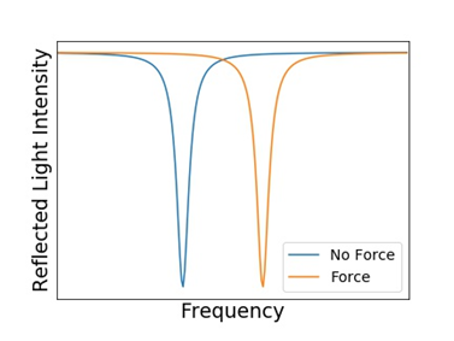Optomechanical Accelerometer

Two mirrors form an optical cavity, which allow light to bounce back and forth multiple times leading to resonances at certain frequencies when the light waves constructively interfere with each other. The location of the cavity resonances depend on the distance between the two mirrors.
Therefore, by applying a force to the cavity we will slightly change the distance between the mirrors and therefore shift the resonance frequencies by an amount proportional to the applied force. These optomechanical cavities have the potential to be useful force sensors because they can be very sensitive and also compact, allowing for large mechanical resonance frequencies which are necessary for dynamic applications.

We are currently performing research on the design and performance of optomechanical force sensors, including methods of rejecting environmental perturbations and using optical frequency combs to measure resonance frequencies with a large dynamic range and measurement bandwidth.
Publication:
- B. Reschovsky and A. Chijioke, "High-Bandwidth Force Sensing with Optical Cavities," in Conference on Lasers and Electro-Optics, OSA Technical Digest (Optical Society of America, 2019), paper STh4G.1.
Contacts
-
(301) 975-8766

